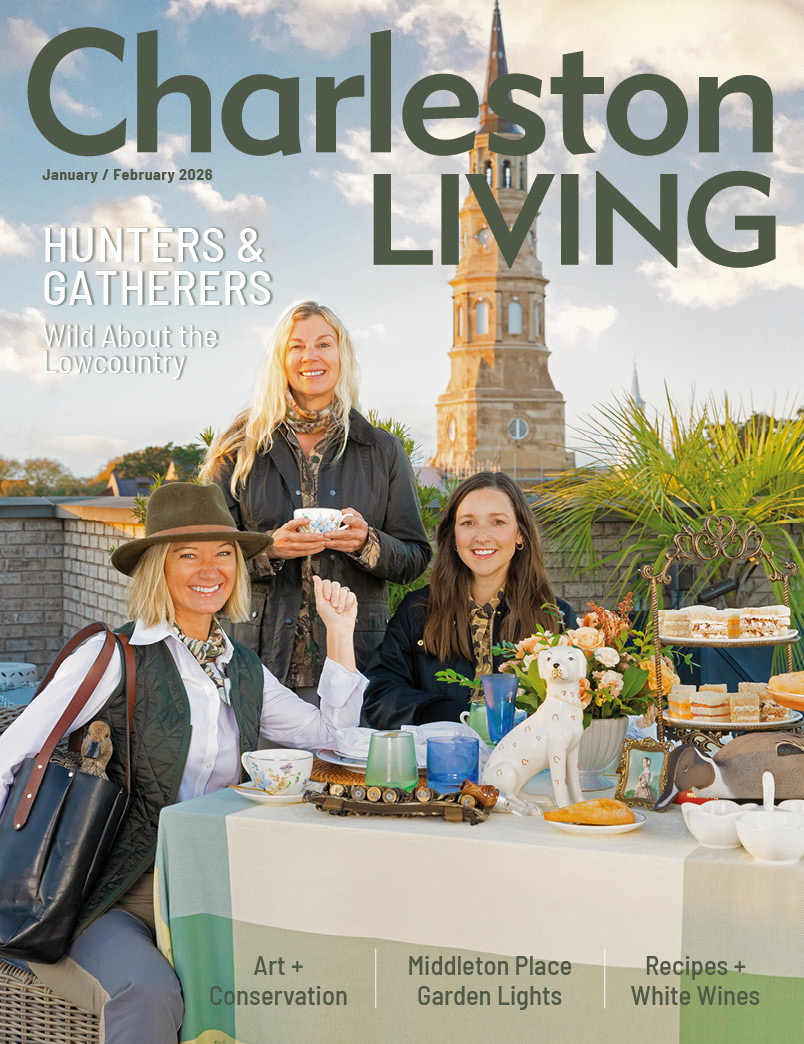Horsing Around
05 May 2022
The tale of the tail in George Washington's portrait at Charleston City Hall
By Tim Lowry

Since 1977, the City of Charleston has played host to the world-renowned Spoleto Festival and the nationally-acclaimed Piccolo Spoleto Festival held in late May and early June each year. Our annual extravaganza of concerts, operas, plays, art and fine craft exhibits is complimented by an equally grand display of Southern hospitality with a plethora of receptions, galas, parades, soirees and garden parties all over the historic city. Such a celebratory atmosphere puts one in mind of President George Washington’s visit during the late spring of 1791.
Contemporary accounts of Mr. Washington’s arrival to our fair city include descriptions of gentlemen “uniformly and elegantly dressed in close short jackets of light blue silk, black Florentine breeches, white silk stockings with light blue silk bow-knots in their shoes” aboard a flotilla of barges that also carried musicians and the choir of St. Philip’s church, performing “a concert, vocal and instrumental, composed of pieces of music and choruses suited to the joyous occasion.”
After a dinner honoring the “illustrious president-general,” there was a series of toasts. Each toast was “attended by a discharge of cannon from the Charleston Battalion of Artillery . . . and St. Michael’s bells echoed forth with their joyous peals.”
That sounds for all the world like a symphony orchestra’s playing of Tchaikovsky’s 1812 Overture, which has been a favorite at outdoor pops concerts during Spoleto seasons of the past.
On another evening, it was reported that a splendid ball was given by the city corporation at which there was a “brilliant assemblage of ladies, elegantly dressed with ribbons and girdles with different inscriptions expressive of their respect and esteem for the president, such as ‘Long live the president’ and ‘Rejoice the hero’s come.’” If you wish to see a similar fashion show, just stand in the lobby of Gaillard Auditorium during intermission at this year’s Spoleto Festival production of Puccini’s La Boheme.
Mr. Washington’s visit was commemorated by commissioning a portrait of the celebrated hero. (Not unlike the official Spoleto poster, when you think about it.) The portrait was to be painted by the celebrated artist John Trumbull. As the story goes, Trumbull, in consultation with the president who was a personal friend, decided to paint a life-size likeness of Washington depicting the general on the eve of the Battle of Princeton. The painting was completed in about a year’s time, but was rejected by the Charleston city fathers because the commission was for a portrait celebrating Washington’s visit to Charleston, of course! An image of George Washington, no matter how life-like, with New Jersey in the background was unacceptable.
Trumbull was apparently more than a little “put out,” but graciously arranged for the president to pose for a new painting. In this second version, Washington stands in an almost identical pose, but Charleston is distinctly visible in the background. In fact, the steeple of St. Michael’s church, where Washington attended services in 1791, is clearly visible. Upon inspection, the city leaders approved the painting and paid the artist in expectation of delivery to Charleston within a few weeks. At this point, the story goes, Trumbull, with the money in one hand and his paint brush in the other, added to the picture a likeness of Washington’s horse with its rump stuck up in an obstinate and disrespectful salute toward the viewer of the painting. The steeple of St. Michael’s church is squarely pictured between the stallion’s hind legs.

The portrait now hangs in Charleston City Hall and is (all horsing around aside) considered one of the finest likenesses of the Father of our Nation that was ever painted. The first portrait that was rejected by the City of Charleston? It is now displayed at Yale University Art Gallery in New Haven, Connecticut. The story of the two paintings has often been retold, embellished and- to use an artistic phrase- “colored up a bit.” In truth, what we actually know from John Trumbull’s own recollection of the incident is simply that an appointed art broker “thought the city would be better satisfied with a more matter-of-fact likeness [of Mr. Washington], such as they had recently seen him—calm, tranquil, peaceful.”
The rest of the story may be exaggeration, or, in keeping with the spirit of a world class arts festival such as Spoleto, artistic license. At any rate, the painting currently hangs in City Hall on Broad and Meeting Street downtown. Members of the public are invited to come inside and view the painting of President Washington and his horse on Mondays and Fridays from 10 a.m. to 12 p.m. and 1 p.m. to 3 p.m. and draw their own conclusions.
Storyteller Tim Lowry is a Southern raconteur from Summerville. Read more at www.storytellertimlowry.com.












